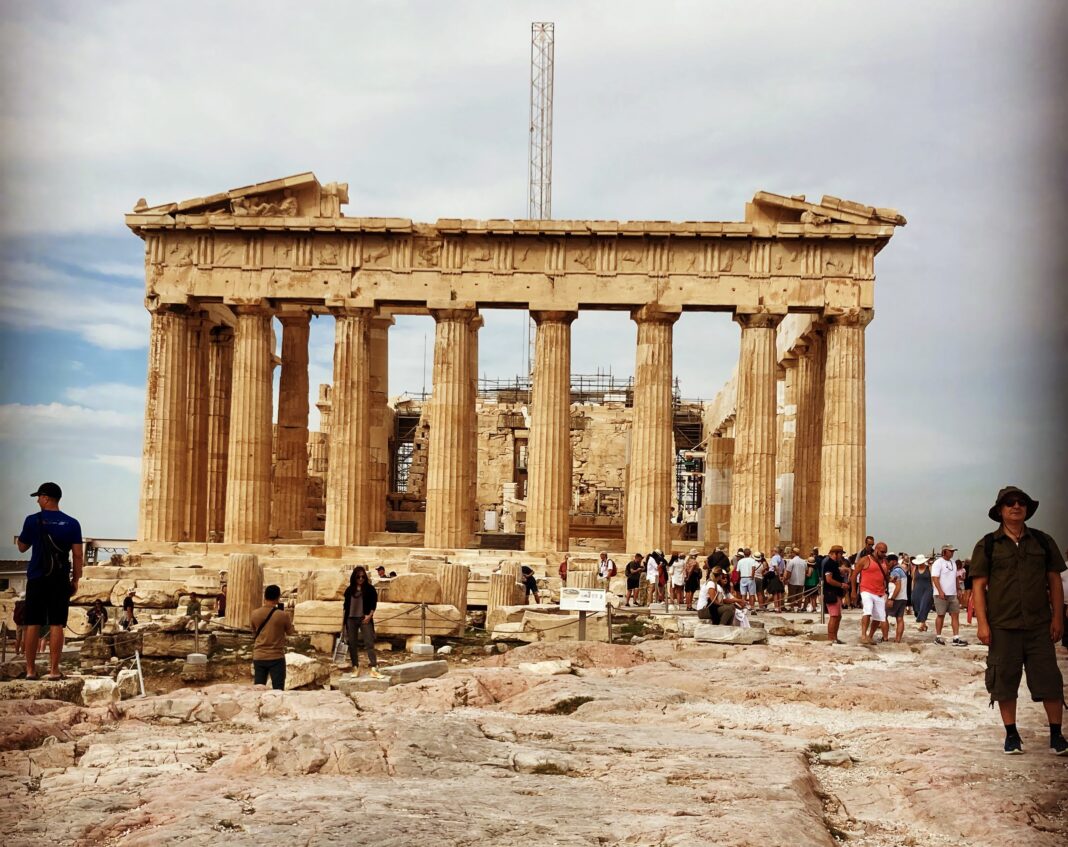“Edibles & Potables” is F&D’s Sunday morning slot for stories that range beyond our metropolitan Louisville coverage area, as with today’s look at how the familiar Greek “national” dish called moussaka came to be — at least, as we know it now.
My first overseas travel experience came in 1985, and included time in Greece. Moussaka was on the short list of dishes I’d be looking to try, and did. There was a mom ‘n’ pop taverna at the foot of the Acropolis, just a few blocks from my lodging, and it was both inexpensive and wonderful.
One of the most influential books of my life is Betty Crocker’s International Cookbook (1980 edition). My friend Bob discovered it. I’d already found a few Greek and Russian recipes at the library prior to the trip in 1985, learning that venison was a fine stand-in for lamb in moussaka, and borscht wasn’t necessarily thin or cold; make it Ukrainian and it could feed legions.
I found moussaka to be much as I’d expected, according to the example of my Betty Crocker-led home cooking, although it came with an insinuation — by none other than budget travel Arthur Frommer (he’ll be 95 in July) — that Greek culinary matters like this might not be as obvious as they seemed.
Edibles & Potables: All the food was Greek to me, if not to my travel guru
In 1984, Frommer wrote:
“There are, of course, many much cheaper restaurants than these in (the tourist areas of) Athens, most of them, however, serving dishes that simply aren’t acceptable to Western tastes. Because there’s a vast difference between the meals a Greek workingman eats (heavily oiled, often sour), and those we’re accustomed to, Athens is the only city in Europe in which I’ve specifically sought out the tourist restaurants. But don’t expect corned-beef-and-cabbage; these are moderately priced tourist restaurants, and therefore the food is still Greek, although a few concessions are made.”
A few decades later (2021), an more detailed explanation was offered at The Splendid Table.
Culinary author Diane Kochilas explained that traditional Greek cooking changed considerably a century ago when an influx of refugees from the former Ottoman Empire came to resettle in Greece as an aftermath of war between Greece and Turkey. According to Kochilas, these ethnic Greek newcomers brought with them a modified, more urban-oriented way of thinking about food, in contrast to the still-prevalent rural way of life in Greece.
In short, moussaka was subject to reinterpretation during the post-WWI era, and in our “anything goes” contemporary times, it is shifting shape yet again.
How moussaka made it into the pantheon of Greek gastronomy (at The Economist)
On March 25th each year Greeks celebrate Independence Day with parades and abundant feasts of bakaliaros skordalia, delicately battered cod with garlic dip.
And yet it is moussaka—sloppy squares of richly flavoured mince, oil-slicked aubergines and indulgent béchamel sauce—that many consider Greece’s national dish. Its entry into the pantheon of Greek gastronomy came about a century after Greek independence. The country’s embrace of the dish is a lesson in how traditions are forged and how a nation’s cuisine evolves.
Foodie patriotism? I’ll take it into consideration, as it might be time to head into the kitchen. Do any local alcohol purveyors stock retsina?
 The Spring 2024 issue of Food & Dining Magazine is now available in all the familiar places: Louisville area eateries and food shops, newsstands and online.
The Spring 2024 issue of Food & Dining Magazine is now available in all the familiar places: Louisville area eateries and food shops, newsstands and online.























